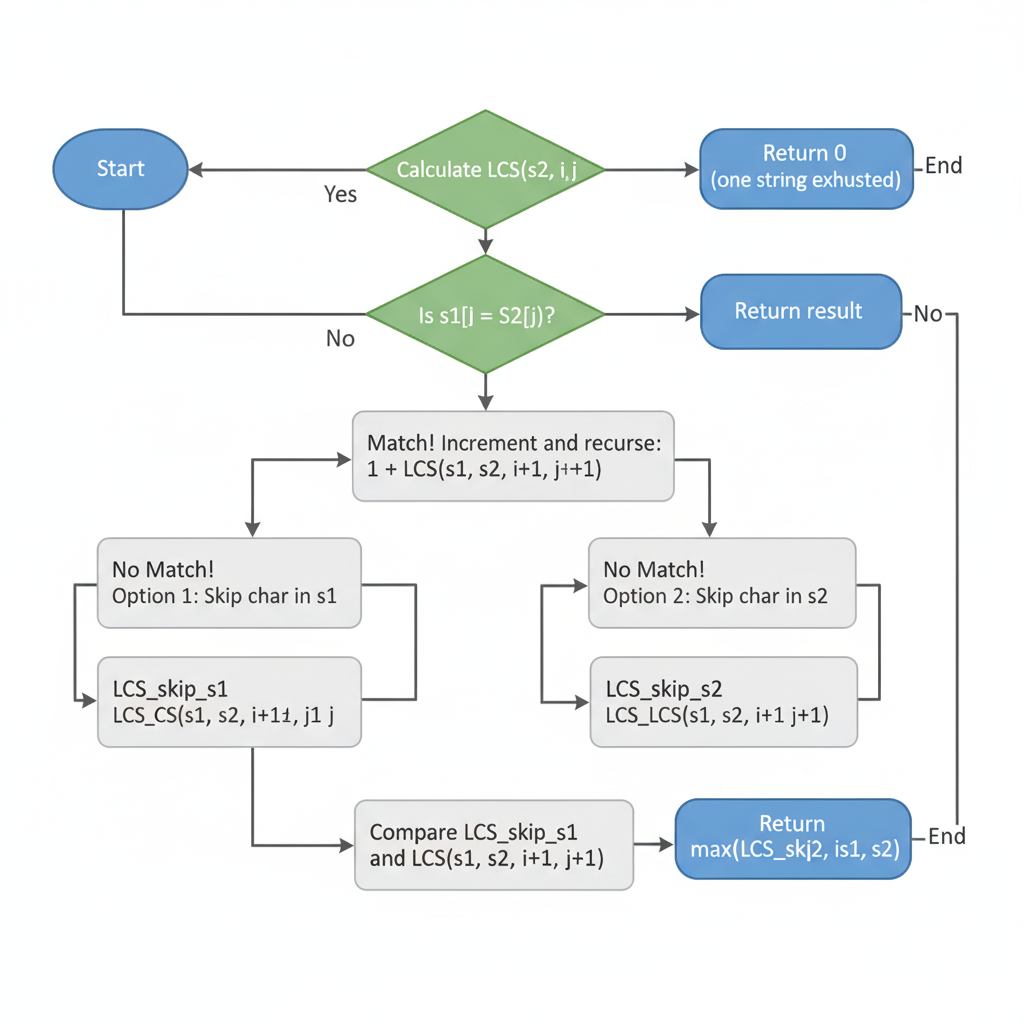Longest Common Subsequence (LCS)
Problem Statement
Given two strings s1 and s2, find the length of their longest common subsequence (LCS). A subsequence is a sequence that appears in the same relative order, but not necessarily contiguous.
Example: Input: s1 = "abcde", s2 = "ace", Output: 3 ("ace")
Approach 1: Recursion
Explanation: Compare characters at current indices. If match, move both pointers. Else, take max by skipping either character.
Time Complexity: O(2m+n)
Space Complexity: O(m+n) recursion stack
function LCS(s1, s2, i, j):
if i == len(s1) or j == len(s2): return 0
if s1[i] == s2[j]:
return 1 + LCS(s1, s2, i+1, j+1)
return max(LCS(s1, s2, i+1, j), LCS(s1, s2, i, j+1))
Approach 2: Memoization (Top-Down DP)
Explanation: Store results of subproblems (i, j) in DP array to avoid recomputation.
Time Complexity: O(m * n)
Space Complexity: O(m * n) DP array + O(m+n) recursion stack
dp[0..m][0..n] = -1
function LCS(i, j):
if i == m or j == n: return 0
if dp[i][j] != -1: return dp[i][j]
if s1[i] == s2[j]:
dp[i][j] = 1 + LCS(i+1, j+1)
else:
dp[i][j] = max(LCS(i+1, j), LCS(i, j+1))
return dp[i][j]
Approach 3: Tabulation (Bottom-Up DP)
Explanation: Fill a 2D DP table iteratively from the base case.
Time Complexity: O(m * n)
Space Complexity: O(m * n)
dp[0..m][0..n] = 0
for i = m-1 to 0:
for j = n-1 to 0:
if s1[i] == s2[j]:
dp[i][j] = 1 + dp[i+1][j+1]
else:
dp[i][j] = max(dp[i+1][j], dp[i][j+1])
return dp[0][0]
Approach 4: Space Optimization
Explanation: Use two 1D arrays (current and next) instead of full 2D DP table.
Time Complexity: O(m * n)
Space Complexity: O(n)
prev = [0]*(n+1)
curr = [0]*(n+1)
for i = m-1 to 0:
for j = n-1 to 0:
if s1[i] == s2[j]:
curr[j] = 1 + prev[j+1]
else:
curr[j] = max(prev[j], curr[j+1])
prev = curr
return prev[0]
